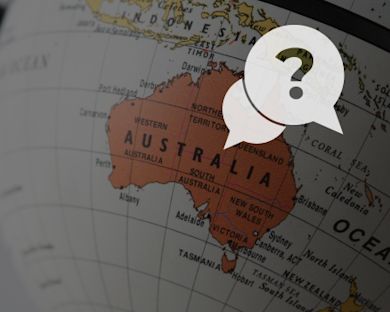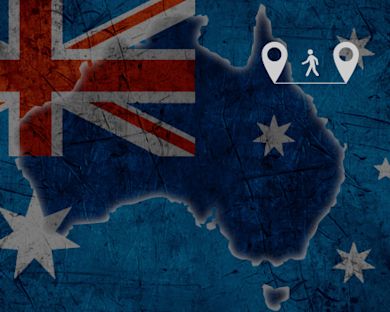Topics covered
- 5 min
- Published: 18 November 2025
- Updated: 17 November 2025
The education system in Australia is structured in accordance with the Australian Qualifications Framework (AQF), comprising four levels for students. These are defined as pre-primary, primary, secondary, and tertiary. Indian students choosing to pursue higher education in Australia can opt for the various academic options available at many Australian universities or take up vocational training at TAFE or private institutions. TAFE is the popular acronym for Technical and Further Education. Read on to know more about the Australian education system and its specific features.
Why Choose Australia for Higher Education?
Among the many study-abroad destinations, Australia is highly preferred by Indian students for its top-notch education system, globally recognised degree programs, and varied course choices. Some of the other reasons why studying in Australia is the best choice you can make for your future are:
Worldwide recognition of degrees: The degree earned from pursuing a study program in Australia is recognised globally by several higher education institutions and employers. This enables graduates to work anywhere in the world after completing their studies in Australia.
Top-quality learning: The standards of education followed at Australian institutions are comparable to those of leading universities internationally. Strong emphasis is placed on the quality of instruction, research opportunities, and student learning outcomes.
Post-study work opportunities: Australia allows international students to stay in the country for an extended duration to work and gain valuable professional experience. This time period is allowed after the intended duration of their study program has been completed.
Join the IDP student community
Connect with peers and student ambassadors to hear real experiences, tips, and advice about studying abroad.

Understanding the Australian Qualifications Framework (AQF)
The Australian Qualifications Framework is essentially Australia’s national policy that ensures educational qualifications across all schools in the country are consistent and standard. These include schools, higher education institutions, and vocational training institutes. A clear structure of 10 levels of education - from Certificate I to PhD or the Doctoral degree - is predefined, ensuring that qualifications remain consistent throughout.
Defined below are the 10 AQF levels in Australia for your better understanding:
AQF Level | Qualification |
Level 1 | Certificate I |
Level 2 | Certificate II |
Level 3 | Certificate III |
Level 4 | Certificate IV |
Level 5 | Diploma |
Level 6 | Advanced Diploma, Associate Degree |
Level 7 | Bachelor’s |
Level 8 | Bachelor Honours, Graduate Diploma, Graduate Certificate |
Level 9 | Master’s Degree |
Level 10 | Doctoral Degree (PhD) |
Structure of the Australian Education System
The education system in Australia is categorised into four main stages. These include Early Childhood Education, which covers kindergarten or preschool, Primary School (Years 1-6), Secondary School (Years 7-12), and Tertiary Education, which encompasses university and vocational learning.
Early Childhood Education
This primarily covers children in preschool or pre-primary stages, where they are prepared for formal schooling in the later years. Kindergartens and daycare programs are a vital component of this educational system.
Primary Education
This covers students from Years 1-6 or 1-7, varying for some schools. Focus is laid on building basic concepts through foundational subjects such as Math, English, and Science.
Secondary Education
This is designed for students studying in Years 7 or 8-12 and is typically further divided into two parts: Junior Secondary (Years 7-10) and Senior Secondary (Years 11-12). Students graduating with secondary education earn the Higher School Certificate (HSC) or the Victorian Certificate of Education (VCE). Both of these are essential for entrance into the university.
Tertiary Education
The structure of the Tertiary Education system generally covers universities and Vocational Education and Training (VET) providers. The most popular among them are TAFE institutions.
Primary and Secondary Education
Both primary and secondary education in Australia are mandatory under the AQF structure provisions. Primary schooling in Australia typically spans Years K-6 or 7, while secondary schooling begins in Year 7 or 8 and continues through to Year 12.
In primary schools in Australia, children between the ages of 4 and 5 start kindergarten or preschool, continuing until they are between 11 and 12 years old, when they are in Year 6 or 7.
Secondary education in Australia is generally classified into Junior Secondary (Years 7-10) and Senior Secondary (Years 11-12).
Vocational Education and Training (VET)
VET courses are growing in popularity in Australia, attributed to the industrial demand for hands-on, practical skills among students. Some of the key features of VET Australian courses are:
They are designed in alignment with industry demands, thus equipping students with hands-on skills that can help them contribute to industrial growth.
Qualifications obtained after completing VET courses are recognised across Australia. These include all qualifications from Certificate I to Advanced Diploma.
Higher Education (University Level)
Under the Australian education system, several universities offer both undergraduate and postgraduate programs. They both play an essential part in higher education in Australia, and a large number of international students apply to these programs in the country every year.
The undergraduate courses include the following:
Diploma (AQF Level 5)
Associate Degree (AQF Level 6)
Bachelor’s degree (AQF Level 7)
Bachelor’s Honours Degree (AQF Level 8)
Upon completion of the undergraduate programs, students can choose to pursue a wide range of postgraduate courses offered by several Australian universities:
Graduate Certificate and Graduate Diploma (relatively shorter-duration courses pursued after a Bachelor’s, also classified under AQF Level 8)
Master’s degree (AQF Level 9)
Doctoral degree (AQF Level 10)
Australian Grading System Explained
Many Australian universities use a letter-based system, also known as a grading system, where grades are assigned to student work in order from highest to lowest. The highest grade is High Distinction (HD), followed by Distinction (D), Credit (CR), Pass (P), and the lowest grade is Fail (F). The system of academic grading in Australia uses a percentage range that corresponds to each grade assigned, such as:
85-100% - HD
75 - 84% - D
65 - 74% - CR
50 - 64% - P
Lower than 5o% - F
Academic Year and Intakes in Australia
The academic year in Australia typically includes two intakes each year: Semester 1, which begins in February/March, and Semester 2, in July. Some universities may also have a third intake in November; however, it is relatively less common than the other Australian intakes and is only offered for specific courses.
As a follow-up to the semester system in Australia, classes typically begin at most Australian institutions in late February or early March in the first semester and late July or early August for the second semester.
Listed below are the admission timelines to be followed for Indian students applying to Australian universities:
February intake
Apr - Sep: Research the universities and courses in Australia
Jun - Aug: Take English proficiency tests widely accepted at most Australian universities, such as IELTS
Aug - Oct: Apply to the shortlisted universities
Nov - Dec: Application processing by the applied universities
Jan - Mar: Offer acceptance by the university where you have been accepted, fee deposit, and student visa application for Australia
July intake
Aug - Nov: Research the universities and courses in Australia
Dec - Feb: Take English proficiency tests widely accepted at most Australian universities, such as IELTS
Feb - Mar: Apply to the shortlisted universities
Mar - Apr: Attend interviews, if required by any university, as part of the application process
Popular Courses for Indian Students in Australia
Some of the most popular courses in Australia among Indian students every year are Engineering, MBA, Business Analytics, AI, Life Sciences, and more. The table below highlights the popular study options in Australia for Indian students for a lucrative career path upon graduation:
Admission Requirements for Indian Students to Study in Australia
Indian students aspiring to pursue higher learning in Australia must meet the specified eligibility criteria for each university they choose to apply to. These generally include completion of 10+2, proof of English proficiency, proof of finances, and a valid passport. Please note that each university in Australia has its own unique admission requirements. However, some of the standard admission requirements in Australia are listed below for your reference:
Completion of a Year 12 qualification or an overseas equivalent, such as 10+2 for Indian students, with the required average percentile or score.
Proof of English language proficiency to study in Australia by sharing the required eligibility score in a widely accepted test, such as IELTS. The minimum IELTS requirement in Australian universities is 6.0-6.5.
Submission of a complete set of documents, as required by the university you’re applying to, such as Statement of Purpose, Letter of Recommendation, updated resume, official academic transcripts, work experience certificate (if applicable), valid passport, etc.
Related Source: https://www.studyaustralia.gov.au/en/tools-and-resources/news/english-language-requirements-changes
Cost of Education in Australia
The average study cost in Australia is estimated to be in the range of AUD 20,000 to AUD 50,000 (approximately). The figures are indicative and may vary from one university to another, as well as depending on the degree pursued.
Listed below are the average tuition fees in Australia for different levels of study programs for reference:
Undergraduate or Bachelor courses: AUD 20,000 - AUD 45,000 (approx)
Postgraduate or Master’s courses: AUD 22,000 - AUD 50,000 (approx)
Doctoral courses: AUD 20,000 - AUD 42,000 (approx)
The tuition cost is separate from the average cost of living in Australia, which is expected to be around AUD 20,000 per annum (approximately). However, this is only a general estimate of the total cost, and actual expenses may vary from one student to another, depending on their lifestyle, inflation rates, location in Australia, and other factors.
For a general reference, the table below highlights the average cost of living in Australia for Indian students:
Parameters | Cost of Living (approx) Per Week |
On-campus | AUD 90 - AUD 280 |
Hostels/guesthouses | AUD 90 - AUD 150 |
Shared rental | AUD 85 - AUD 215 |
Rental | AUD 165 - AUD 440 |
Hoemstays | AUD 235 - AUD 325 |
Groceries / dining out | AUD 80 - AUD 280 |
Phone/internet | AUD 20 - AUD 55 |
Car | AUD 150 - AUD 260 |
Gas/electricity | AUD 35 - AUD 140 |
Public transport | AUD 15 - AUD 55 |
Recreation | AUD 80 - AUD 150 |
Related Source: https://www.topuniversities.com/student-info/student-finance/how-much-does-it-cost-study-australia
Source: https://www.idp.com/australia/study-in-australia/cost-of-living-in-australia/
Scholarships for Indian Students in Australia
Indian students can opt for a host of scholarships in Australia. Some of the popular ones include the Endeavour Awards, the Australia Awards, and Melbourne’s International Undergraduate Scholarship. Given below are the top options for financial aid for Indian students to pursue higher education in Australia:
Australian Government Scholarships | Scholarships by Australian Universities | Private Scholarships to Study in Australia |
Endeavour Awards - fully-funded scholarships for PG and PhD students | Sydney Scholars India Scholarship by the University of Sydney for August intake students | Fulbright Scholarships for exceptional students and professionals pursuing academic research |
Australia Awards - for UG, PG, and PhD students | Griffith Remarkable Scholarship by Griffith University for UG and PG students | Commonwealth Scholarships for students from Commonwealth nations |
Research Training Program (RTP) - Research Master’s degree students and PhD students | Monash University Scholarship by Monash University for Honours and Research students | Tata Trusts Scholarships - low-interest loan scholarships for Indian students |
How IDP Can Help You Study in Australia
Set up a secure future path in Australia with the help of IDP Education, one of the best study-abroad consultants for Australia. From identifying the top courses and universities in the country to helping students through the admission process, IDP Education experts take care of it all. Our consultants also assist in researching the top scholarship options for Indian students to pursue higher education in Australia.
FAQs on Australian Education System Explained for Indian Students
1. How is the Australian education system different from that in India?
The education system in Australia focuses on hands-on and application-based learning, compared to the more theoretical and exam-based system in India.
2. What is the credit point system in Australian higher education?
Australian universities generally require a specific number of credit points to complete a higher learning degree. The average requirement is 48 points per annum for a full-time course or 24 points per semester.
3. Can Indian students work while studying in Australian institutions?
Yes, Indian students are eligible to work part-time while studying in Australian universities. This includes 48 hours per fortnight during the study term and unlimited hours during holidays.
4. What are the key benefits of studying under the Australian system?
Some of the top advantages of studying under the Australian education system include:
Focus on innovation and hands-on skills
Globally-recognised degrees
Post-study work opportunities
5. How does Australia’s education prepare students for jobs?
Students learning under the Australian education system become job-ready by learning real-world applications of skills, vocational training, and industry-specific knowledge.
6. What is the role of research in Australian higher education?
Research plays a vital role in the Australian education system, as it facilitates the generation of new knowledge, informs policy, and fosters innovation.
7. How are international student rights protected in Australia?
The ESOS Act in Australia protects the rights of international students coming to the country for higher education.
Our Popular Study Abroad Destinations:
One account for all your study abroad needs
Create your profile and unlock a wide array of features including personalised recommendations, fast-tracked applications and much more.











